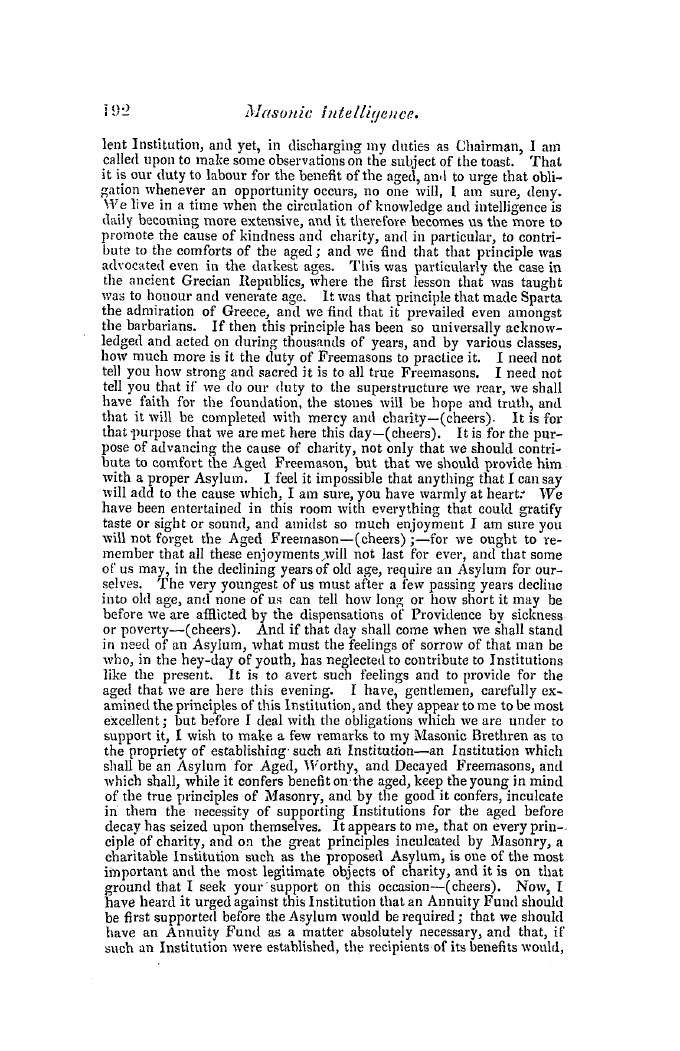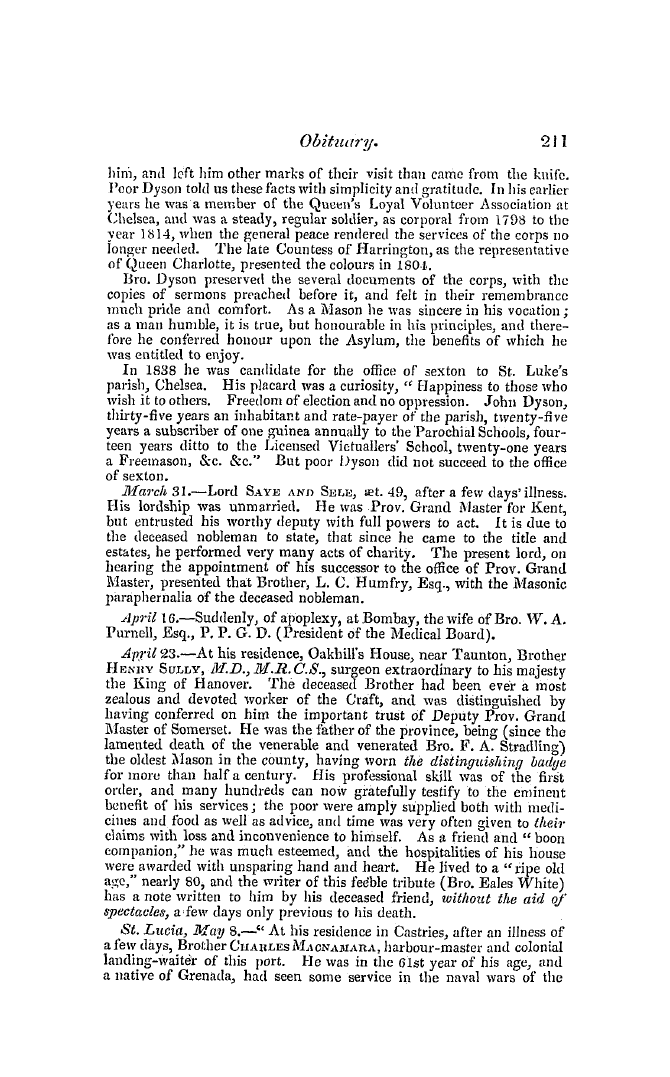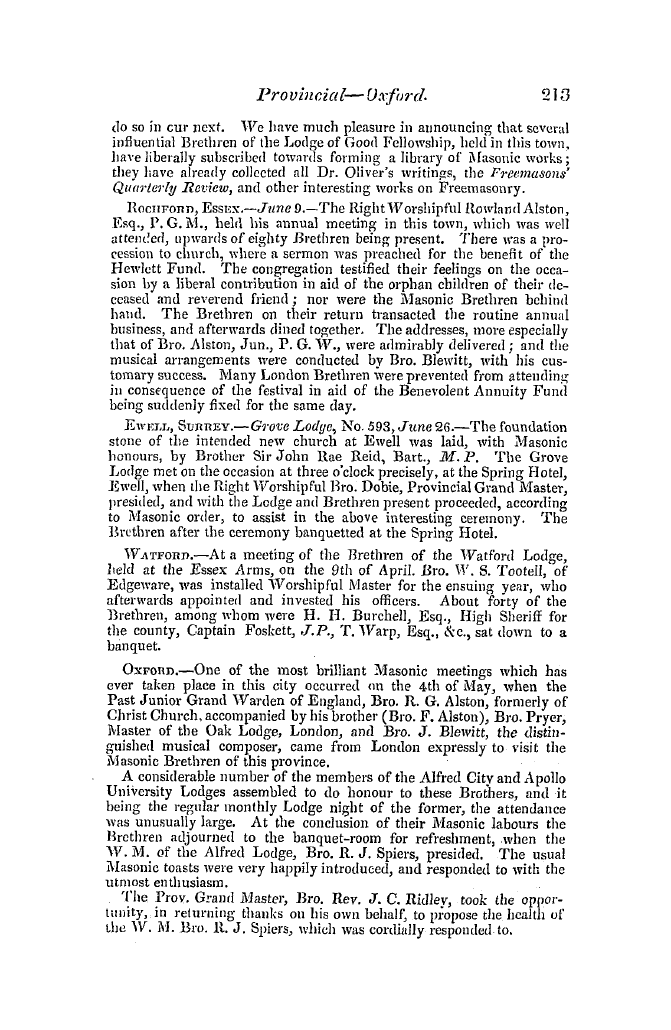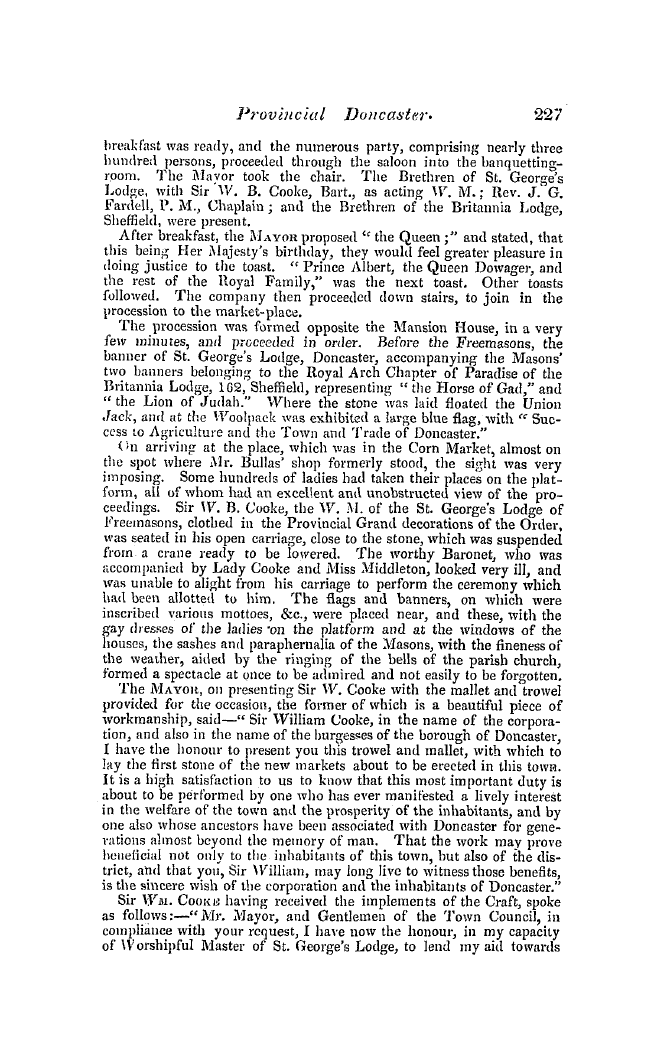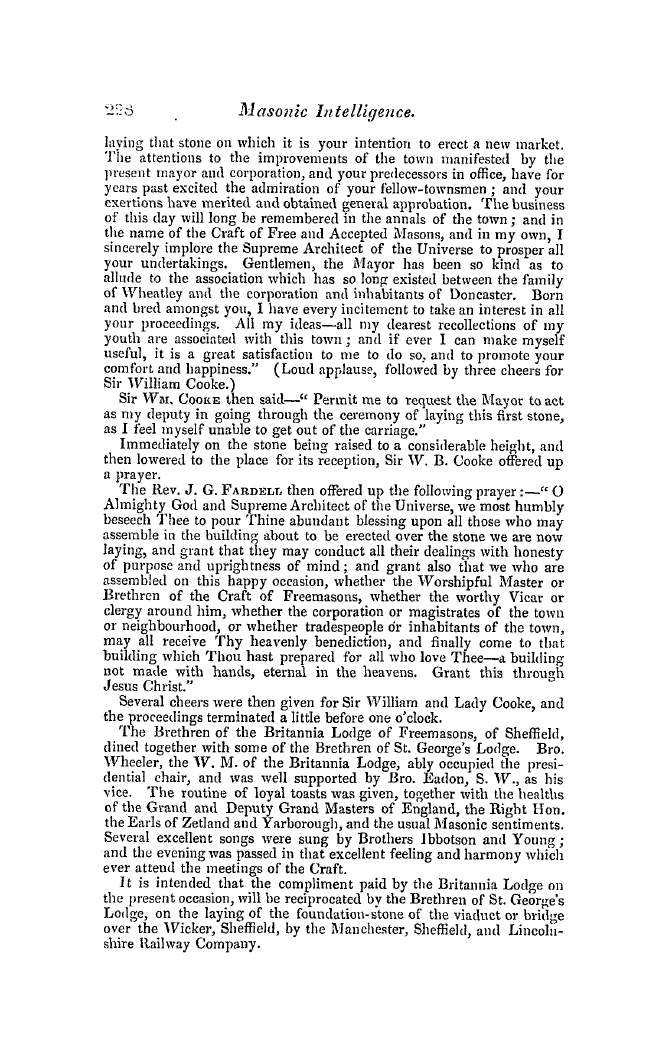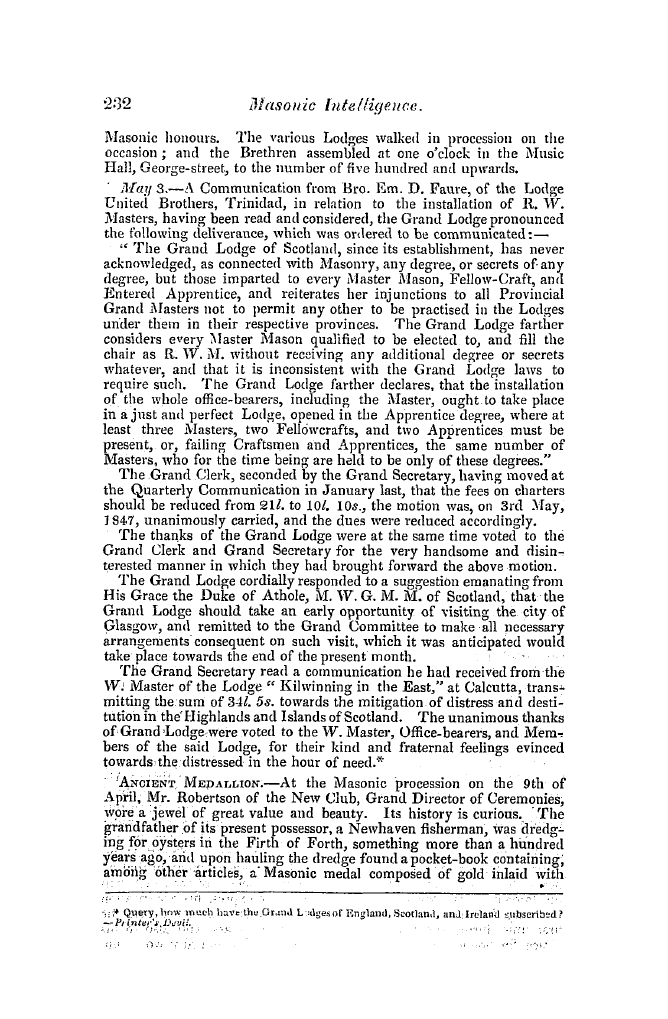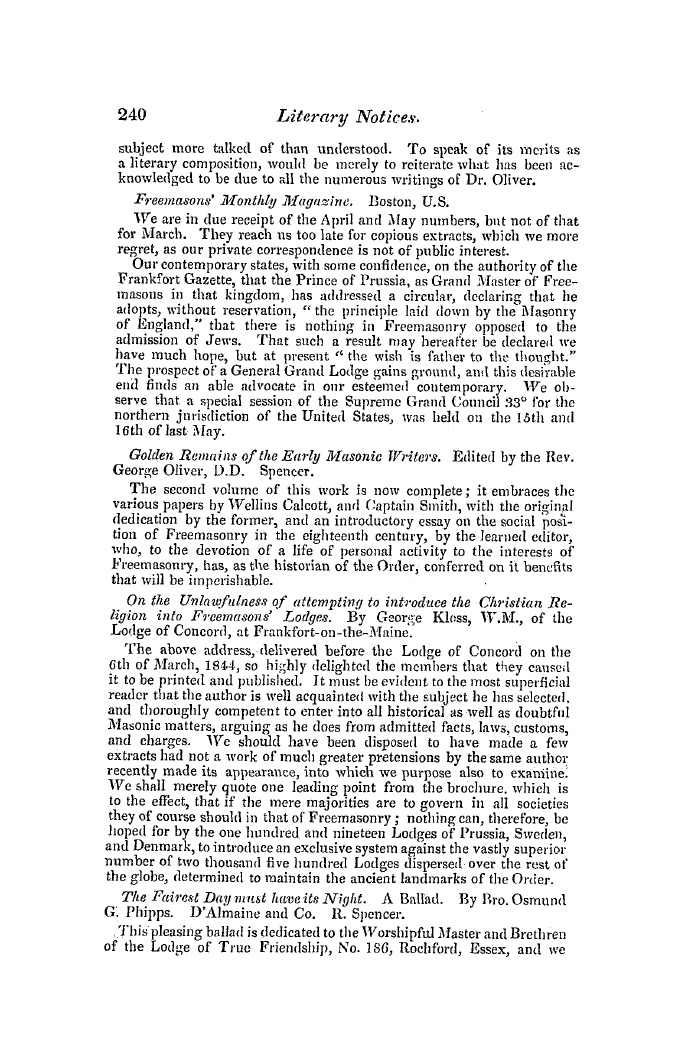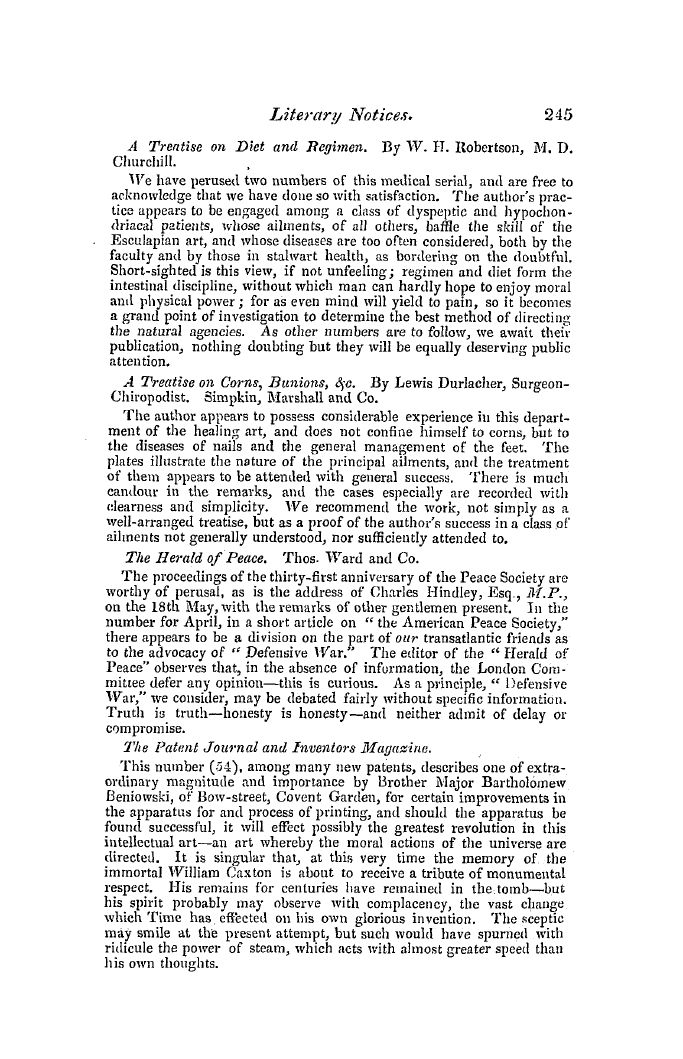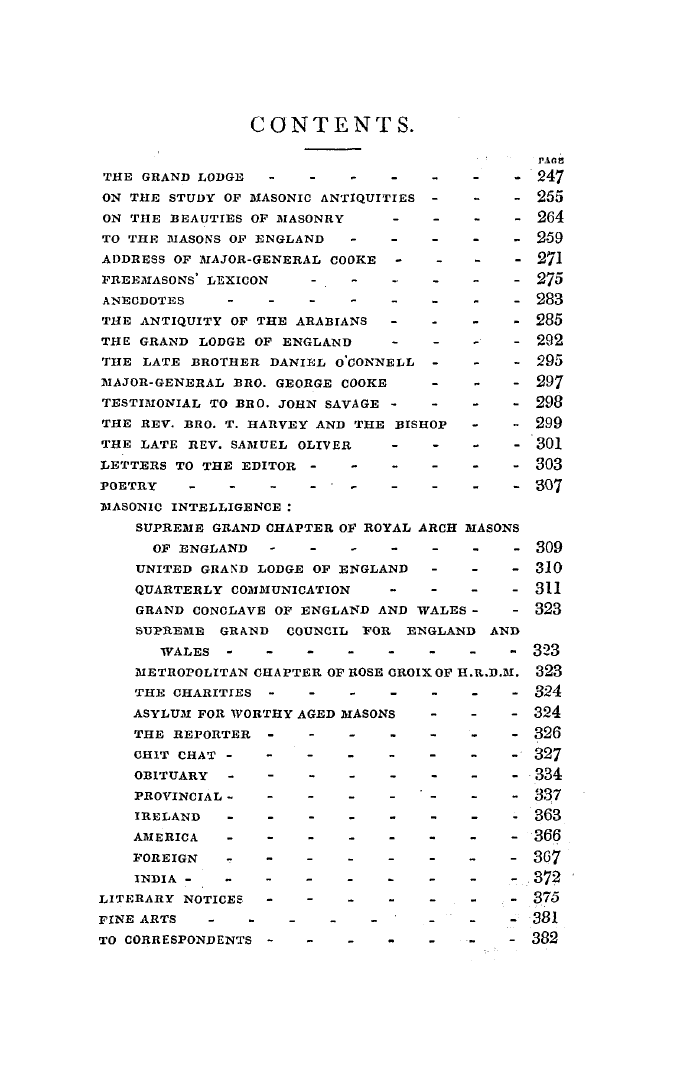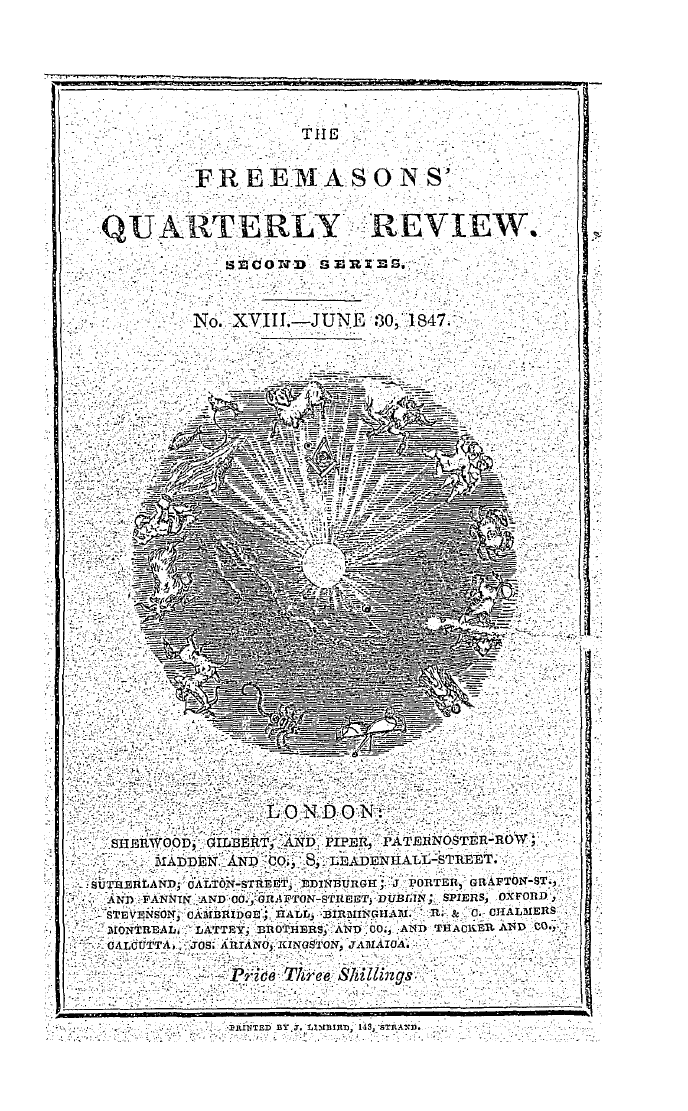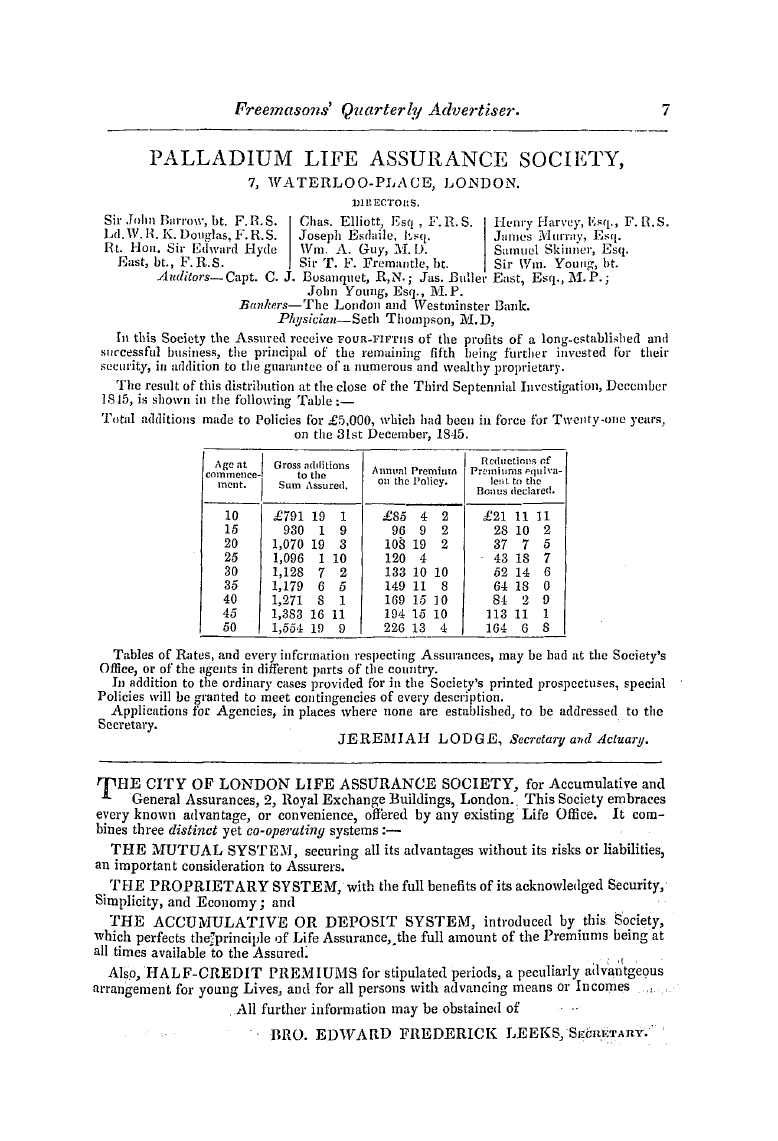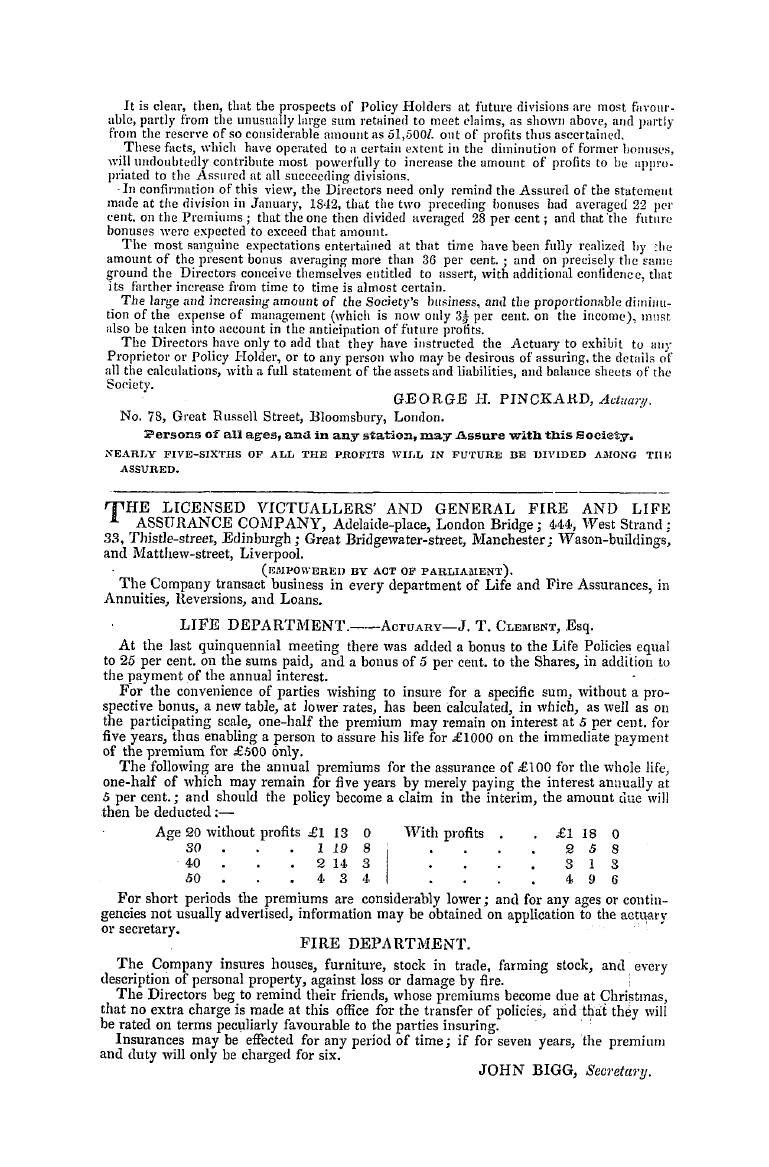-
Articles/Ads
Article THE REPORTER. ← Page 3 of 6 →
Note: This text has been automatically extracted via Optical Character Recognition (OCR) software.
The Reporter.
having their principal lodges or colleges at Tyre and Sidon . They brought with them from Egypt the rites of Dionysius , and flourished to such an extent , that they became the nursery , or parent stock , from whence the most celebrated architects of antiquity derived their knowledge . These were the men who assisted King Solomon in the building of the temple , when presided over by Hiram , King of Tyre . They had three degrees equivalent to E . A . P ., F . C , and M . M ., used their
working tools as moral emblems , and distinguished themselves , both by night and day , by tokens , passwords , and signs . They were particularly attentive to the duties of benevolence , and were distinguished for their spirit of fraternal union and brotherly love . Bro . Pryer then traced the introduction of bodies of these fraternities into Greece and Rome ; in both countries they received great encouragement from the stateand carried architecture to an admirable itch of
, p perfection . In Rome they were associated in colleges , called the Colleges of Free Builders ; and , as in Asia Minor , possessed the exclusive privileges of erecting all temples and palaces . They were in like manner free from all taxes and talliages , exempt from military and state service , and subject only to their own regulations , which were defined in the law of the twelve tables . Under tbe Grand Mastership of Augustus Ctesar they attained a palmy stateand adorned Rome with those lendid
, sp edifices , the ruins of which still excite the attention of the traveller . In their government and peculiar system the Roman Freemasons assimilated entirely to their predecessors the Dionysian Brethren ; they practised the same principles ; recognized the same degrees ; were similarly distinguished by grip , sign , and word ; made the same moral use of
their operative instruments ; and were particularl y distinguished for their fraternal union , their spirit of toleration , and practice of benevolence . A great variety of interesting facts were adduced as to the history , government , and proceedings of the Roman builders , and the analogies which these fraternities presented to Freemasonry as practised at the present day , were particularly striking . On the invasion of Rome by the northern barbarians , it appears that
the fraternity followed the fate ofthe Roman empire ; scattered abroad , and deprived of their peculiar privileges , their art eventually declined ; still , however , they formed themselves into particular bodies , cultivated their ancient craft , and in Italy and Normandy attained to somewhat of their former excellence . The style of their building , however , was evidently debased , and far inferior to the excellence which characterized the Augustan era ; and new principles of building were introduced , adapted to the wants and conveniences of a new form of worship . The ancient basilica were converted into Christian temples , and the assistance
of the Freemasons in the erection of religious temples was again called into active operation . By papal bulls , in the early part of the tenth century , the fraternity was again constituted as a recognized body , under their distinctive appellation of Freemasons , and to whom was exclusivel y entrusted the erection of all Christian edifices ; and so indefatigably did they apply themselves to the work , that almost every part of Christendom is at the present day filled with evidences of their superior skill
. Bro . Pryer traced the progress of the fraternity in various parts of the continent , in England , Scotland , and Ireland , and gave interesting details as to the erection of many of the most important structures of the middle ages , and particularly Strasburgh cathedral . Numerous records of the fraternity were adduced , and it was shown that the ancient Brethren
Note: This text has been automatically extracted via Optical Character Recognition (OCR) software.
The Reporter.
having their principal lodges or colleges at Tyre and Sidon . They brought with them from Egypt the rites of Dionysius , and flourished to such an extent , that they became the nursery , or parent stock , from whence the most celebrated architects of antiquity derived their knowledge . These were the men who assisted King Solomon in the building of the temple , when presided over by Hiram , King of Tyre . They had three degrees equivalent to E . A . P ., F . C , and M . M ., used their
working tools as moral emblems , and distinguished themselves , both by night and day , by tokens , passwords , and signs . They were particularly attentive to the duties of benevolence , and were distinguished for their spirit of fraternal union and brotherly love . Bro . Pryer then traced the introduction of bodies of these fraternities into Greece and Rome ; in both countries they received great encouragement from the stateand carried architecture to an admirable itch of
, p perfection . In Rome they were associated in colleges , called the Colleges of Free Builders ; and , as in Asia Minor , possessed the exclusive privileges of erecting all temples and palaces . They were in like manner free from all taxes and talliages , exempt from military and state service , and subject only to their own regulations , which were defined in the law of the twelve tables . Under tbe Grand Mastership of Augustus Ctesar they attained a palmy stateand adorned Rome with those lendid
, sp edifices , the ruins of which still excite the attention of the traveller . In their government and peculiar system the Roman Freemasons assimilated entirely to their predecessors the Dionysian Brethren ; they practised the same principles ; recognized the same degrees ; were similarly distinguished by grip , sign , and word ; made the same moral use of
their operative instruments ; and were particularl y distinguished for their fraternal union , their spirit of toleration , and practice of benevolence . A great variety of interesting facts were adduced as to the history , government , and proceedings of the Roman builders , and the analogies which these fraternities presented to Freemasonry as practised at the present day , were particularly striking . On the invasion of Rome by the northern barbarians , it appears that
the fraternity followed the fate ofthe Roman empire ; scattered abroad , and deprived of their peculiar privileges , their art eventually declined ; still , however , they formed themselves into particular bodies , cultivated their ancient craft , and in Italy and Normandy attained to somewhat of their former excellence . The style of their building , however , was evidently debased , and far inferior to the excellence which characterized the Augustan era ; and new principles of building were introduced , adapted to the wants and conveniences of a new form of worship . The ancient basilica were converted into Christian temples , and the assistance
of the Freemasons in the erection of religious temples was again called into active operation . By papal bulls , in the early part of the tenth century , the fraternity was again constituted as a recognized body , under their distinctive appellation of Freemasons , and to whom was exclusivel y entrusted the erection of all Christian edifices ; and so indefatigably did they apply themselves to the work , that almost every part of Christendom is at the present day filled with evidences of their superior skill
. Bro . Pryer traced the progress of the fraternity in various parts of the continent , in England , Scotland , and Ireland , and gave interesting details as to the erection of many of the most important structures of the middle ages , and particularly Strasburgh cathedral . Numerous records of the fraternity were adduced , and it was shown that the ancient Brethren

































































